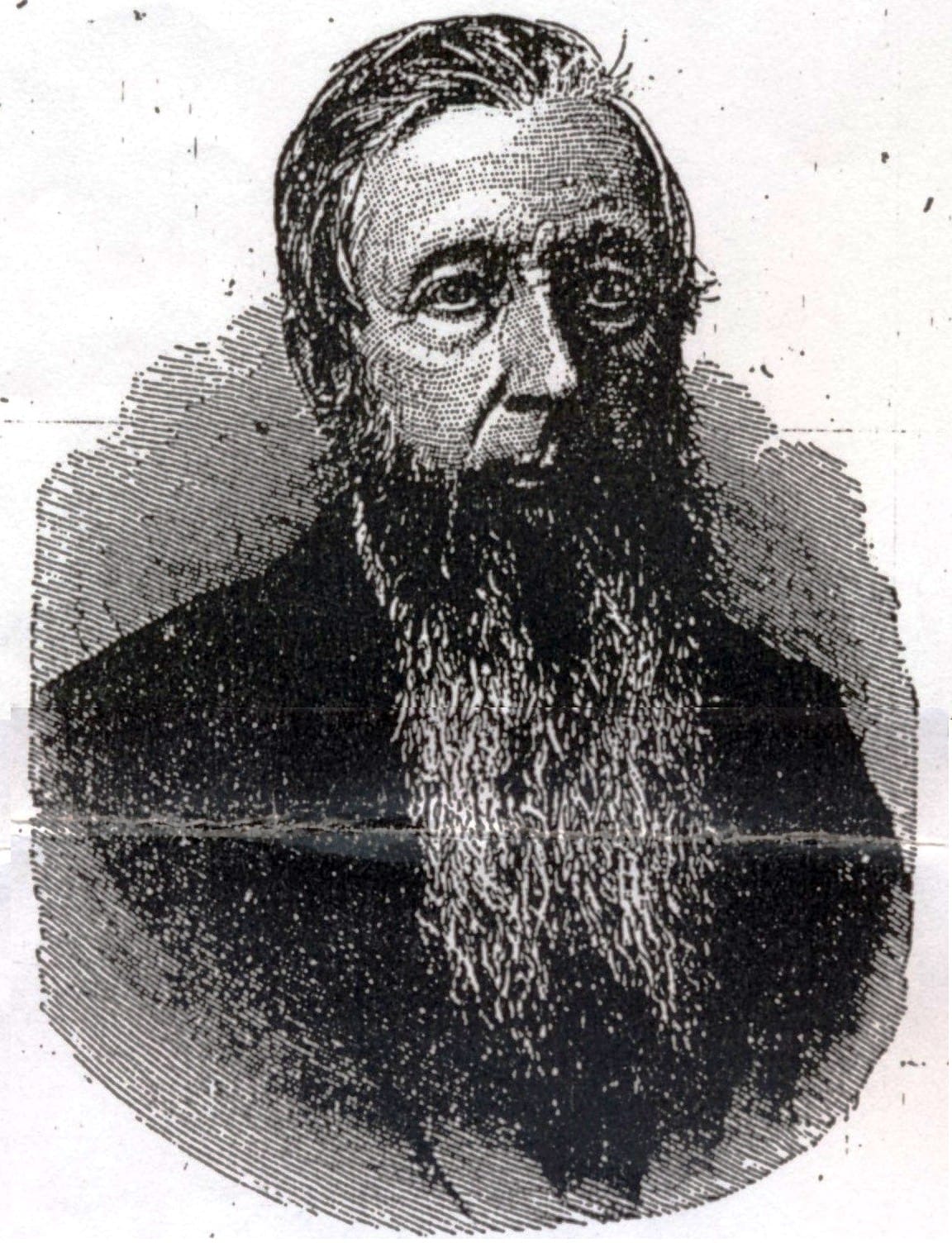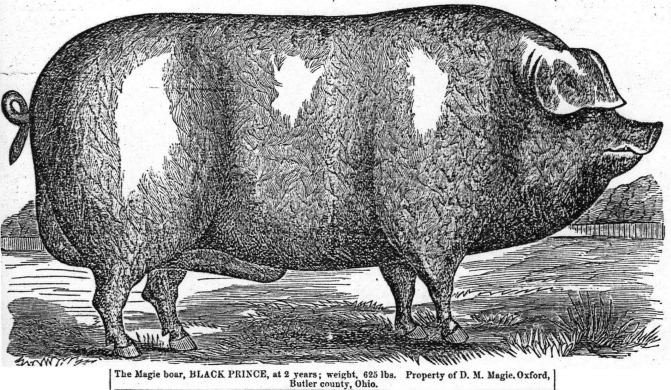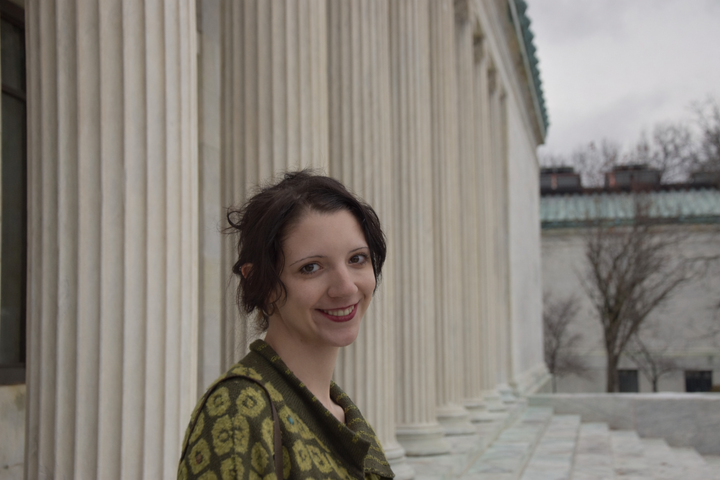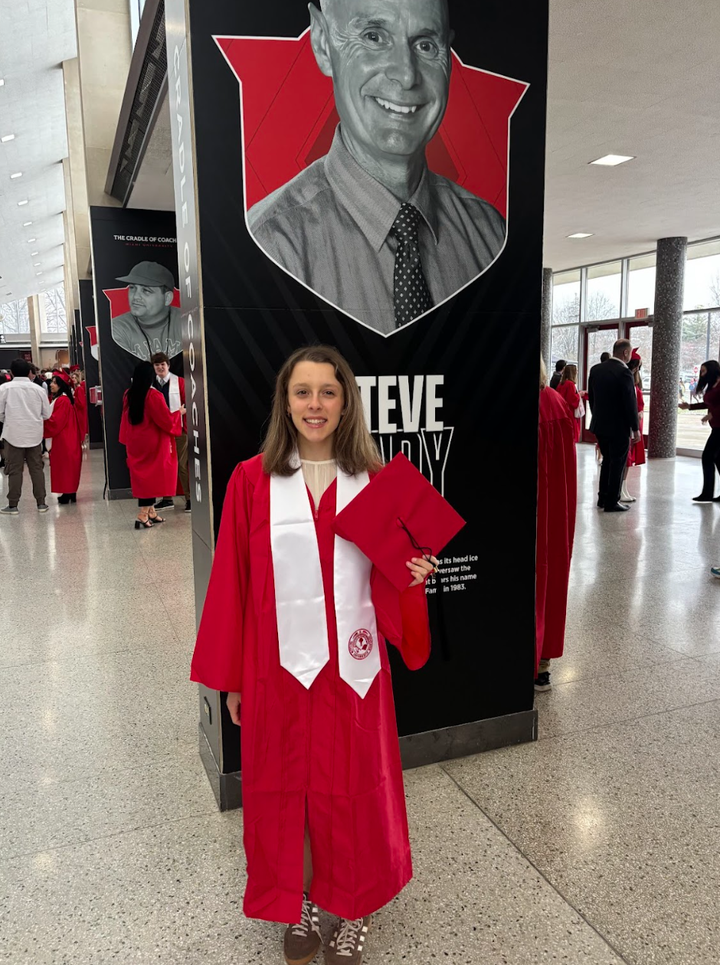Local Legends: Hog Wild
Magie would later claim the “Magie Hog” and the famed “China-Poland Hog” to be one in the same, making him the originator of the breed considered by some historians to be Ohio’s greatest contribution to agriculture.

David Meeker “D.M.” Magie was hog wild, having spent his entire life working in agriculture as a farmer, breeder and stockman.
Magie was born on March 12, 1811, and was the youngest of the three sons of Benjamin and Sarah (Brown) Magie. Like his parents and two of his brothers, Josiah Magie and Benjamin Magie Jr., he was a native of New Jersey, having been born in Elizabethtown of Scottish descent.
The Magies moved to Ohio as part of the wave of New Jersey families that settled in the lands between the Great Miami and Little Miami Rivers, making up the Symmes Purchase. The family first located in Walnut Hills, now a neighborhood of Cincinnati, establishing a farm there.
The Walnut Hills farm would be the first of three farms upon which Magie lived and worked during his childhood. The family soon moved to a different farm in Lebanon and then moved once again to a farm in Monroe.
Magie embraced his agricultural roots from an early age. “A History and Biographical Cyclopaedia of Butler County,” published in 1882, said of his schooling: “in boyhood [he] enjoyed similar advantages to other youth in his day and locality, but while thus obtaining the rudiments of an education he was an apt scholar of the practical education of his farm life.”
This practical interest in agriculture specifically manifested itself in the field of husbandry, and Magie developed an especially intense interest in hog breeding starting around 1837. He began experimenting with different breeds, moistly working with Warren County Hogs, a cross between Russian, Byfield and Big China hogs recently developed by the Shakers at nearby Union Village.
Hogs were of particular importance in a period when regular hog drives brought swine from outlying agricultural areas down to market in Cincinnati, giving the city its nickname of “Porkopolis.” Those pigs not entering Cincinnati’s packing houses for slaughter, were typically transported down the Ohio and Mississippi Rivers to markets further west and south.
When he and his father drove their herd down to Cincinnati, their new breed made quite a stir for the pigs’ size and ability to travel. Other farmers began purchasing their hogs for use as breeders, creating a new and lucrative business for the Magies.
Magie’s father died in January 1842 and a month later, on Feb. 22, 1842 Magie married Hannah Maria (Young) Magie. They resided with Magie’s mother, where Magie took over managing the farm. Their two children, Laura Belle (Magie) Kumler and Sarah M. “Sallie” (Magie) Coffman were born in 1845 and 1847, respectively.
Continuing his experimentations, Magie traveled to Indiana and Kentucky seeking out specific types of swine to bring back to his farm. The “Magie Hog,” the result of Magie breeding together Irish Grazier, Byfield, Poland and China hogs, was described by local newspapers as “[a] perfected variety."
Magie would later claim the “Magie Hog” and the famed “China-Poland Hog” to be one in the same, making him the originator of the breed considered by some historians to be Ohio’s greatest contribution to agriculture.
By either 1847 or 1849, records disagree, Magie had earned enough from selling his breeding hogs to purchase a farm of his own. He moved his family to Oxford, where they purchased the farm of Aaron Austin in Section 14, Town 5, Range 1 of Oxford Township.

Austin had acquired the land in 1815 and built upon it a farmstead accompanied by a mill which he had also constructed. The mill was fed by a mile-long millrace which diverted water from Four Mile Creek before depositing the water back into Four Mile downstream of the mill’s waterwheel. The mill was said to have been the largest mill operation in Oxford Township.
By 1850, Magie had on his farm eight horses, three milch cows, 12 beef cows and 167 hogs for a total livestock value of $1,231, or about $50,000 in 2025. So lucrative was his breeding business that he was selling 500-700 hogs each year, sending them all across the country as well as overseas. “The History of the China-Poland Breed of Swine,” 1921, recorded that Magie was known to drive a wagon throughout Butler County seeking good hogs to purchase in order to fill orders he was trying to keep up with.
In 1859, Magie moved his family to the village, residing at 15-17 North Beech Street and opening a business office at the same time at 12 West Park Place. His son-in-law, Theophilus Rork Kumler, joined him in the business, forming David Magie & Company.
In 1872, a committee was formed to investigate the origins of the Poland-China Hog and reported at that year’s National Swine Breeder’s Convention that Magie was not the originator of the breed. As an act of defiance, Magie refused to file pedigrees for his hogs with livestock recording associations, who responded by refusing to accept pedigrees filed by Magie’s customers using pigs from his herd.
Despite this, a 1897 profile of Magie by the “Oxford News” stated, “Mr. Magie has been quite successful and no longer needs to improve breeds. No matter then by what name the world’s finest hog is known, Mr. Magie lifted the animal from being a racer and a razor back to a bristling gentleman whose savory meat adorns the tables of peers and prelates of princes and potentates of sages and statesmen.”
Magie barely saw the dawn of the Twentieth Century, dying at his family home on Beech Street on Jan. 25, 1900 at age 88. He was buried with Hannah, who had passed on Oct. 30, 1892, in Oxford Cemetery.
His hogs are considered to be a significant contribution to the development of the China-Poland Hog, regardless if he was the first to develop the breed or not. In 1982, under the ownership of John Felix Fryman, the Austin-Magie Farm and Mill District was added to the National Register of Historic Places.
Brad Spurlock is the manager of the Smith Library of Regional History and Cummins Local History Room, Lane Libraries. A certified archivist, Brad has over a decade of experience working with local history, maintaining archival collections and collaborating on community history projects.




